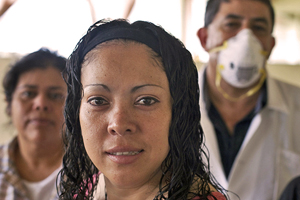December 2012
Constance Newman, Crystal Ng, and Sara Pacqué-Margolis, IntraHealth International
 A competent, motivated health workforce has adequate numbers and types of well-trained and fairly remunerated health workers deployed to where they are most needed. To achieve this, countries have implemented interventions aimed at strengthening preservice education (PSE), including curriculum development, financing, and institutional management reforms. An equally important issue to address in the production of health workers is gender discrimination in PSE settings. Gender discrimination is “any distinction, exclusion or restriction made on the basis of socially constructed gender roles and norms that prevents a person from enjoying full human rights” (World Health Organization 2001, 43).
A competent, motivated health workforce has adequate numbers and types of well-trained and fairly remunerated health workers deployed to where they are most needed. To achieve this, countries have implemented interventions aimed at strengthening preservice education (PSE), including curriculum development, financing, and institutional management reforms. An equally important issue to address in the production of health workers is gender discrimination in PSE settings. Gender discrimination is “any distinction, exclusion or restriction made on the basis of socially constructed gender roles and norms that prevents a person from enjoying full human rights” (World Health Organization 2001, 43).
CapacityPlus conducted a systematic review of 300 articles, reports, program documents, and websites on gender discrimination in higher education, including health worker PSE, from all parts of the world (Ng, Newman, and Pacqué-Margolis 2012). A panel of five experts in gender and in human resources for health then reviewed summaries of 51 interventions identified from the literature search, according to selected characteristics of gender-transformative interventions (described in the following sections).
Using the results of the systematic review, the authors of this technical brief provide an overview of how gender discrimination affects health professional students and faculty as well as intervention options that the expert panel identified as having potential to counter gender discrimination. In addition, we offer recommendations for PSE institutions and other stakeholders to address these challenges.
Next >>
A printer-friendly version is available.